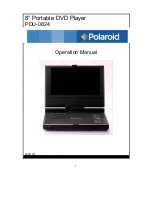
7
075-00
60706-208
A low pressure regulator is installed to further reduce
the fuel pressure to the required four (4) to six (6) oz.
operating pressure.
This low pressure regulator
must be at least 10 feet from the engine gen-
erator set, any closer installation will require a
larger line be installed to provide a fuel reservoir.
This is also true for the single low pressure regula-
tors, it should also be a minimum of 0 feet from the
unit. If this is not done the demand regulator on the
unit and the pressure regulator in the fuel line will
interfere with each other. When the two (2) regula-
tor system is used on LP, a fuel line size of /2 to 5/8
inch is generally adequate for distances up to 300
feet from the primary to the low pressure regula-
tor. (Consult you local fuel supplier for your exact
requirements). The appropriate line size from the
table below is then installed from the low pressure
regulator to the generator set.
FEET
SIZE OF PIPE
up to 25 FT*
3/4 “ Pipe
25 - 100 FT*
1” Pipe
over 100 FT*
Use a two regulator
system.
* Allow an additional 3 feet for each standard
elbow. Do not use ‘street ells’ (restrictive).
NATURAL GAS (NG)
The primary regulator (fuel meter) on the building
should deliver the correct volume and pressure to
the generator set. This regulator must be sized to
deliver the required BTU’s to the generator set and
all other appliances in the building.
If the primary
regulator (fuel meter) is a high pressure regu-
lator then a low pressure regulator must be
installed to bring the pressure down to 4-6 oz.
(7-11 inches water column) of pressure.
This low
pressure regulator must be at least 10 feet from
the engine generator set, any closer installation
will require a larger line be installed to provide a
fuel reservoir.
If this is not done the demand regu-
lator on the unit and the pressure regulator in the
fuel line will interfere with each other. This regula-
tor must be sized to accomidate the demand of the
generator set and any other appliance connected to
it. See table below for the correct size of pipe to be
installed.
FEET
SIZE OF PIPE
up to 25 FT*
3/4 “ Pipe
25 - 100 FT*
1” Pipe
over 100 FT*
Consult Factory
* Allow an additional 3 feet for each standard
elbow. Do not use ‘street ells’ (restrictive).
******************
***** WARNING *****
******************
PERSONAL DANGER - Do not use galvanized pipe
in fuel line runs. The galvanized coating can be-
come eroded and flake off, causing possible obstruc-
tions in the regulator or fuel valve. The results could
range from inoperative engine to hazardous fuel
leaks.
**** CAUTION ****
Be careful when sealing gas joints. Excessive seal-
ing compound can be drawn into the solenoid, regu-
lator or carburetor causing an engine malfunction.
FUEL PRESSURE
LP & NG VAPOR FUEL
Correct fuel pressure can-
not be stressed enough. The most common cause
for inoperative systems is an inadequate or incor-
rect fuel pressure. Performance of the engine is in
direct relation to the correctness of the fuel system.
Shown below is a diagram of a typical LP vapor fuel
installation. Notice the following tables give two
(2) different units of measuring fuel pressure. The
first and most accurate is the use of a simple water
manometer. A manometer is calibrated in inches of
water column. The second is with a pressure gauge
calibrated in ounces per square inch.
Summary of Contents for ULPSS12H4W/E
Page 1: ...11075 00 60706 208 INSTALLATION AND OPERATORS MANUAL PACKAGED STANDBY SYSTEM ULPSS12H4W E...
Page 10: ...11075 00 10 60706 208...
Page 18: ...11075 00 18 60706 208 AC AND DC GENERATOR SCHEMATIC...
Page 20: ...11075 00 20 60706 208 ENGINE GENERATOR SET LAYOUT ULPSS12H4W E...
Page 21: ...21 11075 00 60706 208 ENGINE GENERATOR SET PAD LAYOUT...
Page 23: ...23 11075 00 60706 208 DATE HOURS ITEM WORK PERFORMED MAINTENANCE LOG...








































